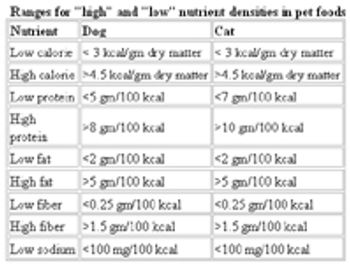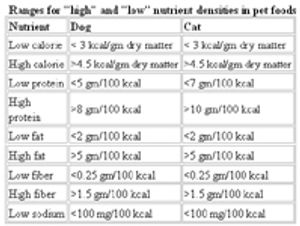
Instead of viewing anorexia as a secondary problem that will improve when the primary disease has resolved, it is better to be proactive and administer nutrients early.

Instead of viewing anorexia as a secondary problem that will improve when the primary disease has resolved, it is better to be proactive and administer nutrients early.

The number of pets that are overweight or obese has reached epidemic proportions in the USA and other industrialized countries. For example, just over 35% of adult cats in the USA are overweight or obese. As veterinarians, we need to be proactive on focusing on obesity prevention.

The past decade has seen a revolution in our understanding of adipose tissue. The functions of fat have traditionally been understood as energy storage, thermal insulation, and structural support for some organs. It is now known that adipose tissue is metabolically active and constitutes the largest endocrine organ in the body with unlimited growth potential at any stage of life.

Dietary therapy plays such an integral role in the management of gastrointestinal (GI) diseases that it constitutes a part of the therapeutic plan in virtually every such case. Diet can be part of the diagnostic process as well, such as using an elimination diet in a dietary trial. It is beyond the scope of this discussion to address each disease of the GI system and the recommended diagnostic and therapeutic approach for each.

There are three methods available for placement of a gastrostomy tube: percutaneous nonendoscopic, percutaneous endoscopic, and surgical.

Instead of viewing anorexia as a secondary problem that will improve when the primary disease has resolved, it is now well recognized that it is better to be proactive and administer nutrients early.

The past decade has seen a revolution in our understanding of adipose tissue.

Since reports of feline hyperthyroidism began to appear from around the world in 1980, this disease has become the most common endocrinopathy in cats.

The number of animals that are overweight or obese has reached epidemic proportions in the US and other countries.

Diabetes mellitus is the second most common endocrine disorder in cats, with an estimated incidence of 0.5% (1 in 200-250 cats).

Published: August 1st 2010 | Updated:

Published: August 1st 2010 | Updated:

Published: August 1st 2010 | Updated:

Published: August 1st 2010 | Updated:

Published: April 1st 2009 | Updated:

Published: April 1st 2009 | Updated: